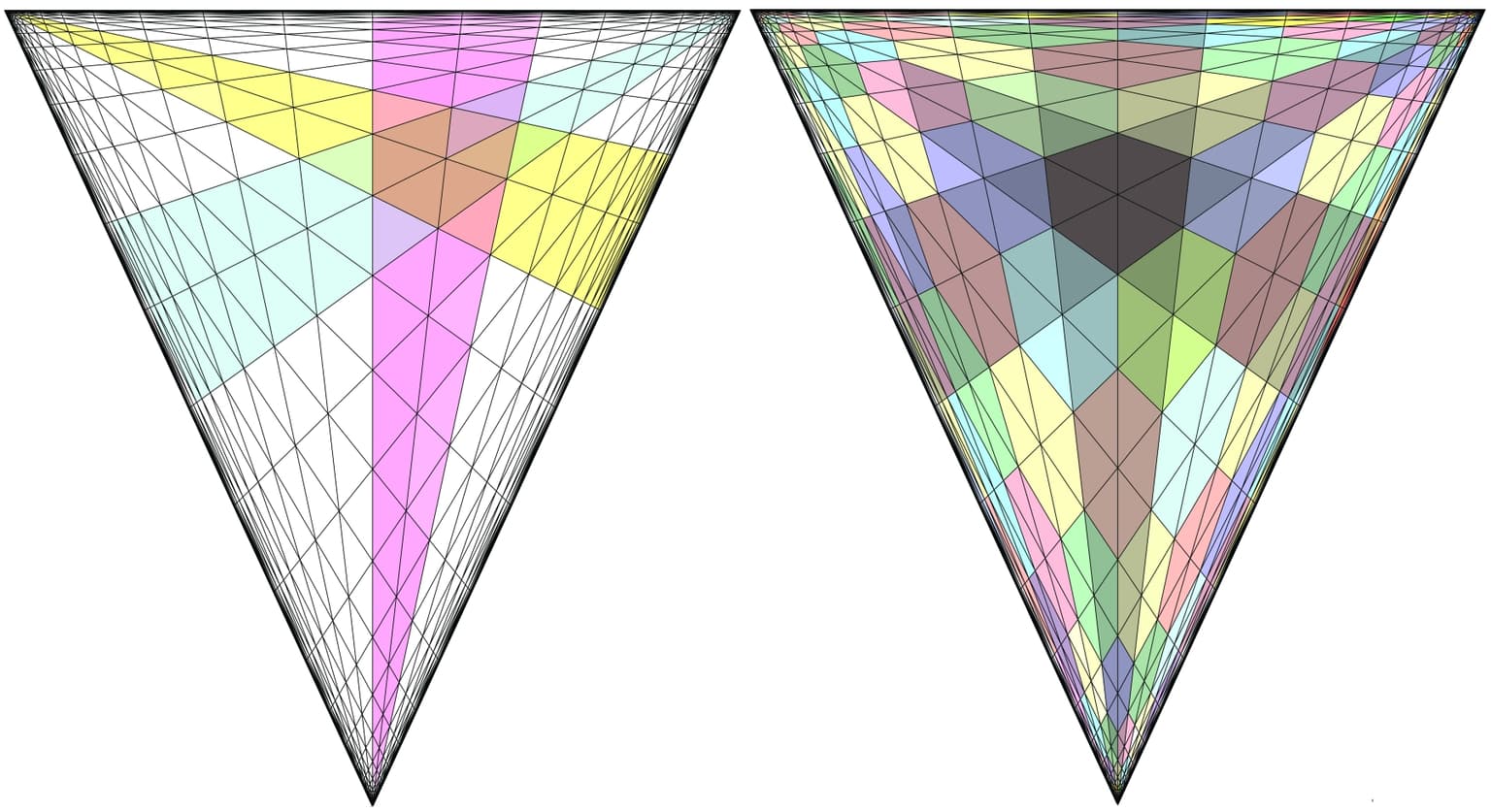2018 Joint Mathematics Meetings
Chris McCarthy
Artists
Chris McCarthy
Associate Professor of Mathematics
Mathematics Department, BMCC City University of New York
New York, New York
Statement
This artwork came out of my dissertation which involved proving theorems related to the Hilbert Metric. The dissertation, "The Hilbert Projective Metric, Multi-type Branching Processes and Mathematical Biology: a Model of the Evolution of Resistance," is about the mathematics underlying some of the models that are helping us to understand the rate at which diseases become resistant to treatment. To better understand the Hilbert Metric, I applied the metric to the 2 simplex (i.e., to a triangle) and wrote a computer program to draw lines uniformly far apart w.r.t. the metric. The resulting grid tiled the simplex with Hilbert Metric equilateral triangles and circles (the hexagons). I added colors. The results are my artwork.
Artworks

Search Lights. The Hilbert Metric Tiling the 2 Simplex
28 x 43 x 2 cm
Computer generated image printed on glossy paper
2014